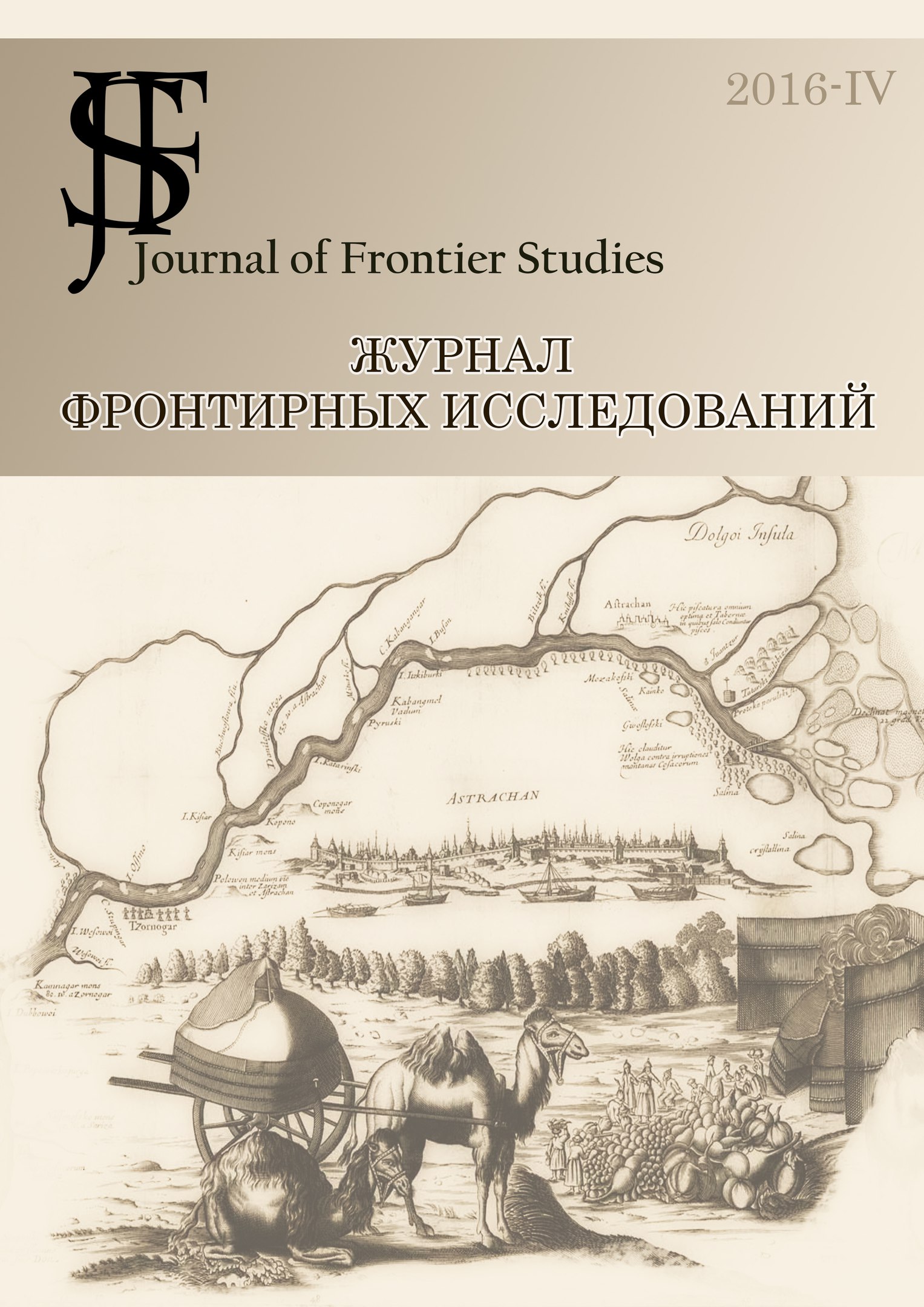Abstract
Frequent economical, political and cultural exchanges between German and Scandinavian people during the Middle Ages led to the large scale changes that affected many parts of people’s lives and resulted in the appearance of German-Scandinavian frontier culture with its specific features.
This article, using the example of Middle German heroic epic “Das Nibelungenlied” (“The Lay of the Nibelungs”) and the corpus of adjoining texts that comprise “the legend of Nibelungs / Nibelungenlegend” aims at describing how literature transgresses boundaries, how frontier literature and folklore function in their new space, how canon texts are restructured following the effects of migration and how the ancient and the new plots can be blended in new works of art.
The article begins with a short review of the existing manuscripts of the medieval German heroic epos ""Das Nibelungenlied”. The most characteristic features of the manuscripts are briefly described. Special attention is paid to the so called m and n-versions dating back to the XIV-XV centuries (Darmstadt manuscripts) of the poem, as they can be regarded the marginal versions, containing a specific mixture of oral and written traditions of the Nibelungen legend.
The article proceeds with description of how Nibelungen legend is reflected and transformed in the folklore of Faeroe Islands. Further the article discusses the contents of medieval Danish ballads of the Hven island "Grimhild’s Vengeance” (“Grimhildis Hæven”), the history of creation and the publication of these ballads is briefly described. The content-analysis of texts allows the author to draw a number of conclusions on the sources which formed the basis of these works of folklore, and more widely – about the ways of evolution of Nibelungen legend within the space of medieval German-Scandinavian frontier.
References
Borrow G.H. (2014) Grimhild’s Vengeance: Three Ballads. NY: Creatspace.
Braunmüller Kurt (2013) How Middle Low German Entered the Mainland Scandinavian Languages. In Guilds, Towns and Cultural Transmission in the North, 1300-1500. University Press of Southern Denmark. Pp. 57-72.
Das Lied vom hürnen Seyfrid (1958). Critical edition with introduction and notes. – Manchester: Manchester University Press.
Das Nibelungenlied. Ed. Helmut de Boor (1963). In Deutsche Klassikerd es Mittelalters, 17th ed. Wiesbaden.
Eder Annemarie, Müller Ulrich (2002). Faeroe Islands. In The Nibelungen Tradition. An Encyclopedea. NY and London: Routledge. Pp. 306-307
Flood J. L. (2002) Siegfried’s Dragon-Fight in German literary tradition. In The Nibelungen Tradition. An Encyclopedea. NY and London: Routledge. Pp. 42-65.
Gustafsson Sofia (2013). German Influence in Swedish Medieval Towns: Reflections upon the Time-bound Historiography of the Twentieth Century. In Guilds, Towns and Cultural Transmission in the North, 1300-1500. University Press of Southern Denmark. Pp. 109-130.
Heinzle Joachim (2002). Manuscripts of the Nibelungenlied. In The Nibelungen Tradition. An Encyclopedea. NY and London: Routledge. Pp. 209-214.
Heusler Andreas (1920). Nibelungensage und Nibelungenlied: Die Stoffgeschichte des deutschen Heldenepos. Dortmund: Ruhfus.
Lockwood W.B. (1979) The Nibelungen Tradition in Faroese. In German Life and Letters. Vol. 32. Issue 4, Pp. 265-272.
Mortensen L.B., Bisgaard L. Late Medieval Urban Civilization and its North European Variant. In Guilds, Towns and Cultural Transmission in the North, 1300-1500. University Press of Southern Denmark. Pp. 7-30.
Naum Magdalena (2014) Multi-ethnicity and Material Exchanges in Late Medieval Tallinn. In European Journal of Archaeology. Vol. 17 issue 14, Pp. 656-677.
Poulsen B. (2013) The Movement of People between Northeren Germany and Danmark. In Guilds, Towns and Cultural Transmission in the North, 1300-1500. University Press of Southern Denmark. Pp.31-56.
Sarakaeva A.A., Sarakaeva E.A., Lebedeva I.V. (2016) Marriage, love and sex in the “Song of the Nibelungs”. In The modern world: experience, problems and prospects: materials of the II international research and practice conference October 31h. Los Gatos (CA), USA: Scientific public organization “Professional science”. Pp 211-225.
Timm Lenora. (1982) The Ring of Dancers: Images of Faroese Culture. Symbol and Culture Series. Review. In American Anthropologist Vol. 84, issue 3. Pp. 688-689.
Vorderstemann Jürgen (1976). Eine unbekannte Handschrft des Nibelungenliedes in der Hessischen landes – und Hochschulbibliothek Darmstadt. In ZfdA Vol. 105, Pp 115-122.
Weiss Gerlinde (2002) Grimhilds Hæven. In The Nibelungen Tradition. An Encyclopedea. NY and London: Routledge. P. 15.
Winter W.L. (1973) The Baltic as a Common Frontier of Eastern and Western Europe in the Middle Ages. In LITHUANIAN QUARTERLY JOURNAL OF ARTS AND SCIENCES. Volume 19, No.4
Wylie Jonathan, Margolin David (1981). The Ring of Dancers: Images of Faroese Culture. Philadelphia: University of Pennsylvania Press.

This work is licensed under a Creative Commons Attribution-NonCommercial-NoDerivatives 4.0 International License.

